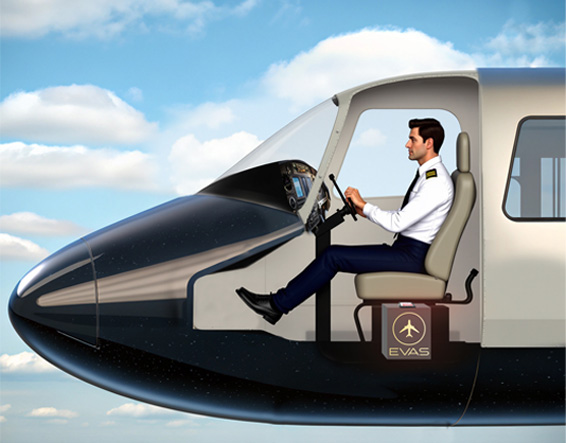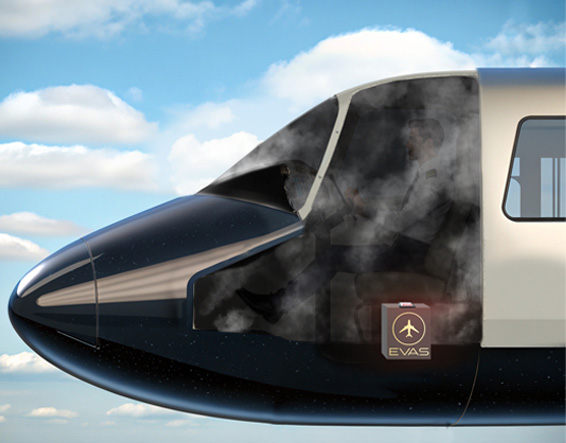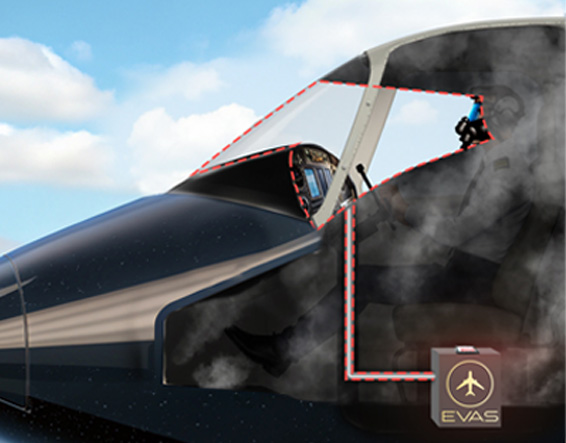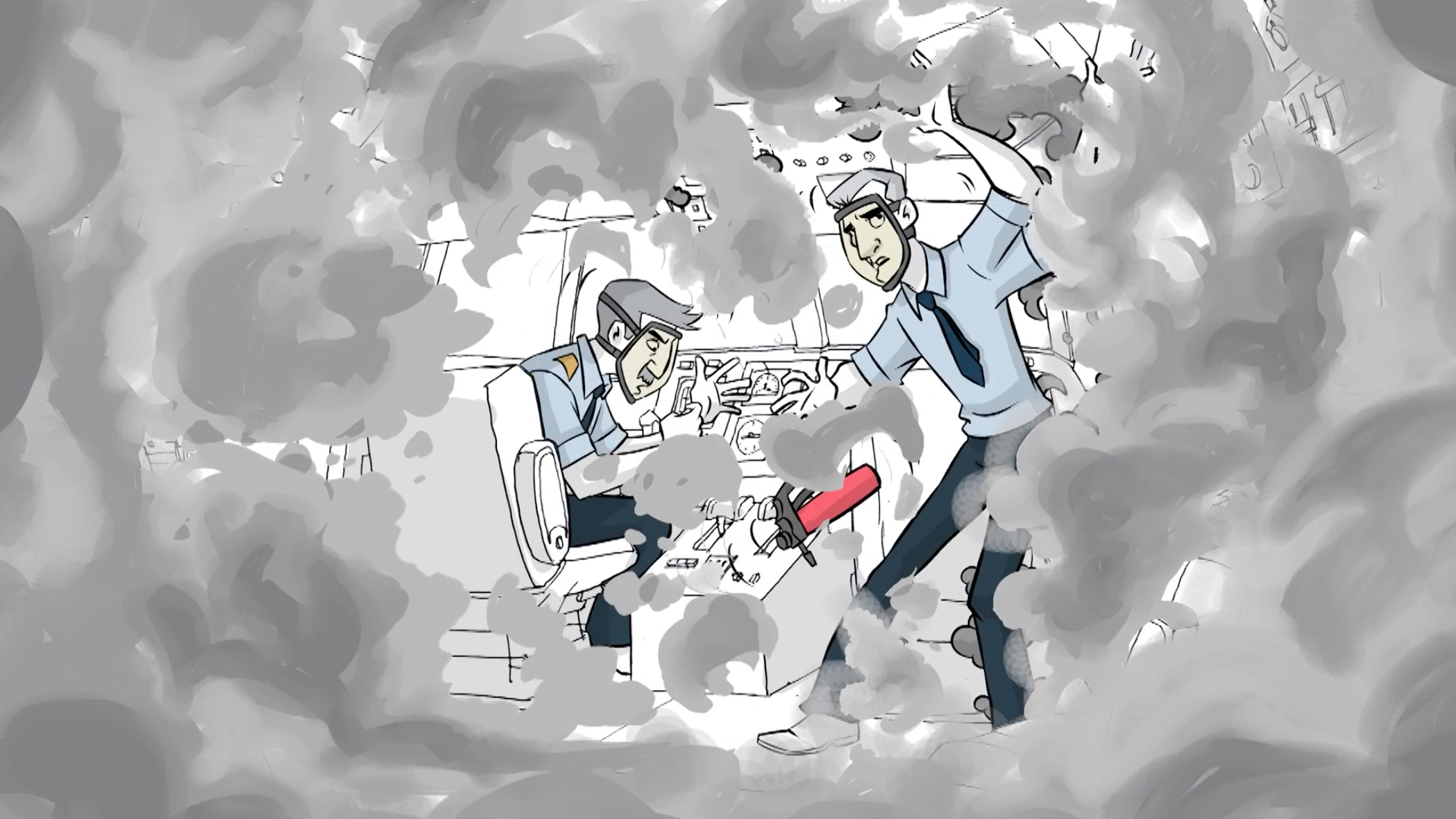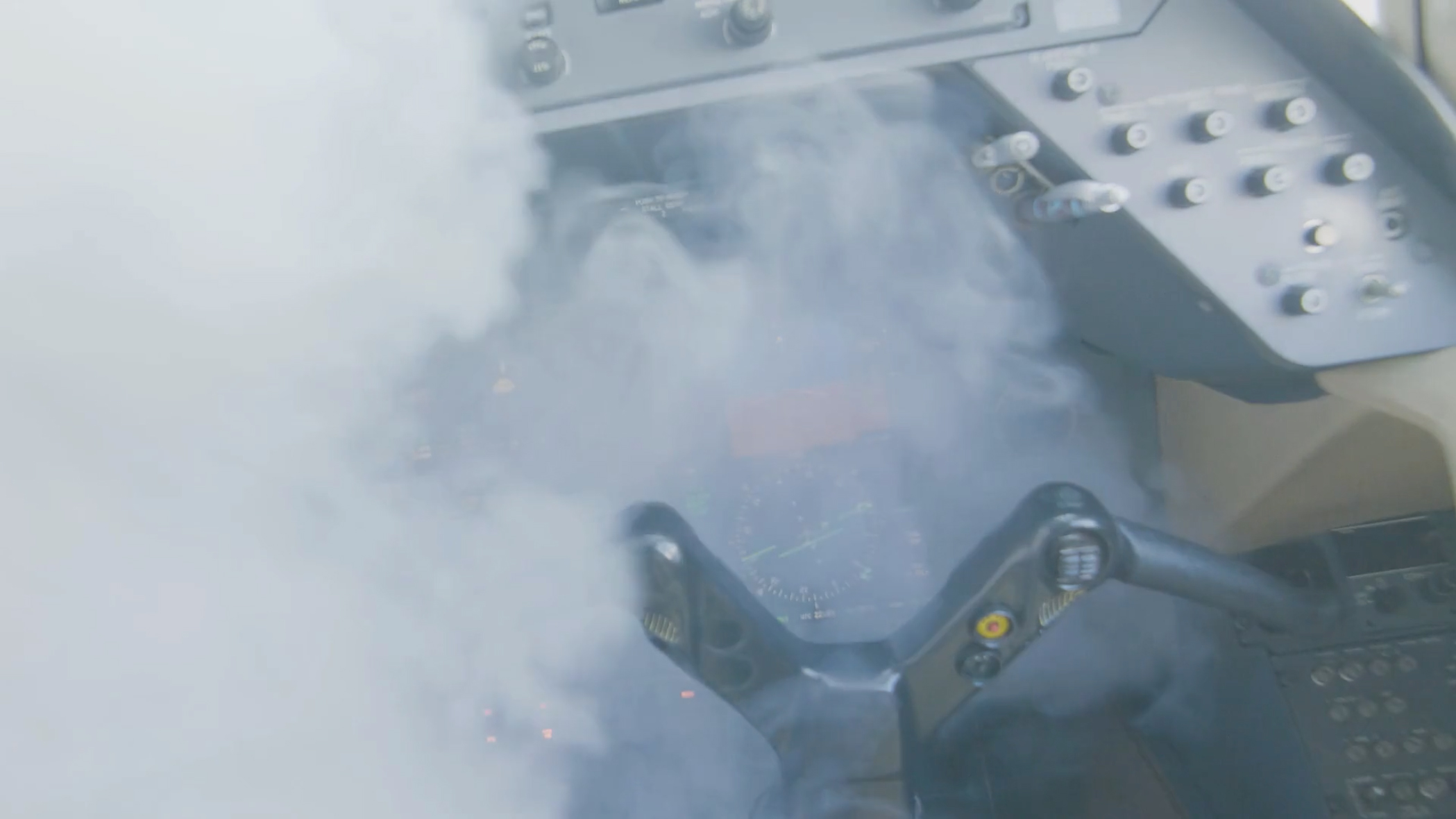The system requires virtually no installation.
EVAS only takes the space of one Jepp Manual case. When needed, the pilot removes the IVU (Inflatable Vision Unit) from the EVAS® case and pulls a tab to activate the system. The IVU inflates with one lobe above and one below the glareshield. The whole process takes about 30-60 seconds.
Recommended by the FAA and other aviation authorities.
Statistics from FAA Service Difficulty Reports clearly show that in-flight fires, smoke or fumes are one of the most significant causes of unscheduled or emergency landings.
EVAS can save your life.
When smoke evacuation procedures are not sufficient, EVAS® provides emergency backup allowing the pilot to see and fly the aircraft to a safe landing. After it is activated, EVAS® is continually pressurized with filtered cockpit air to maintain volume and preserve a clear view.


